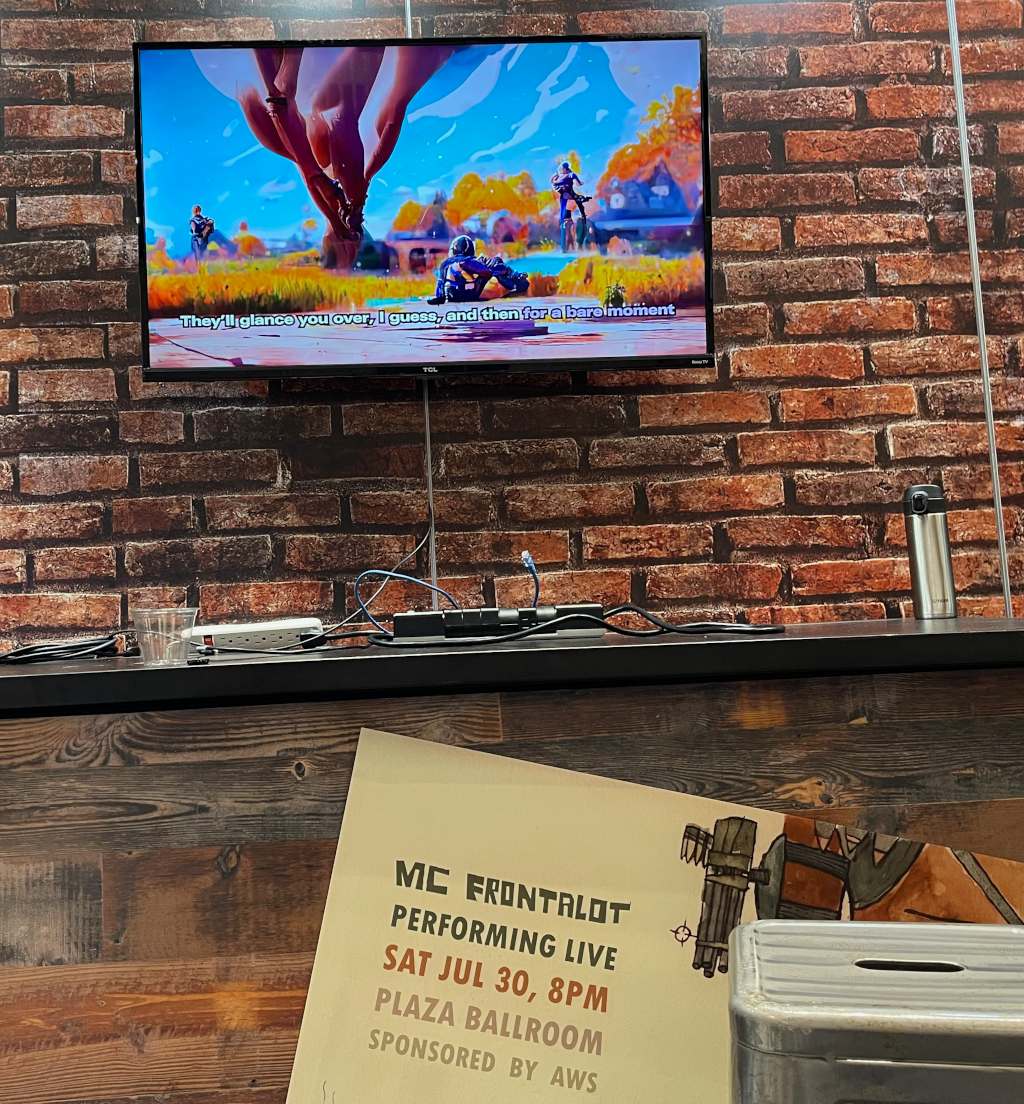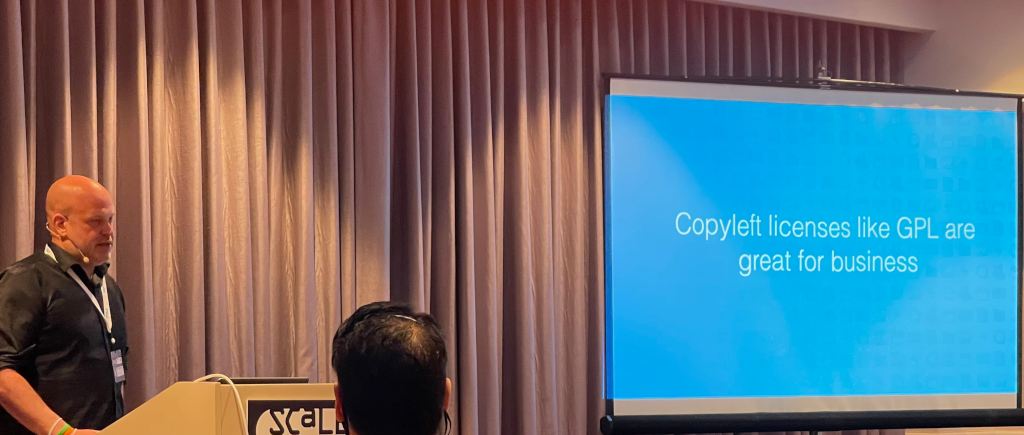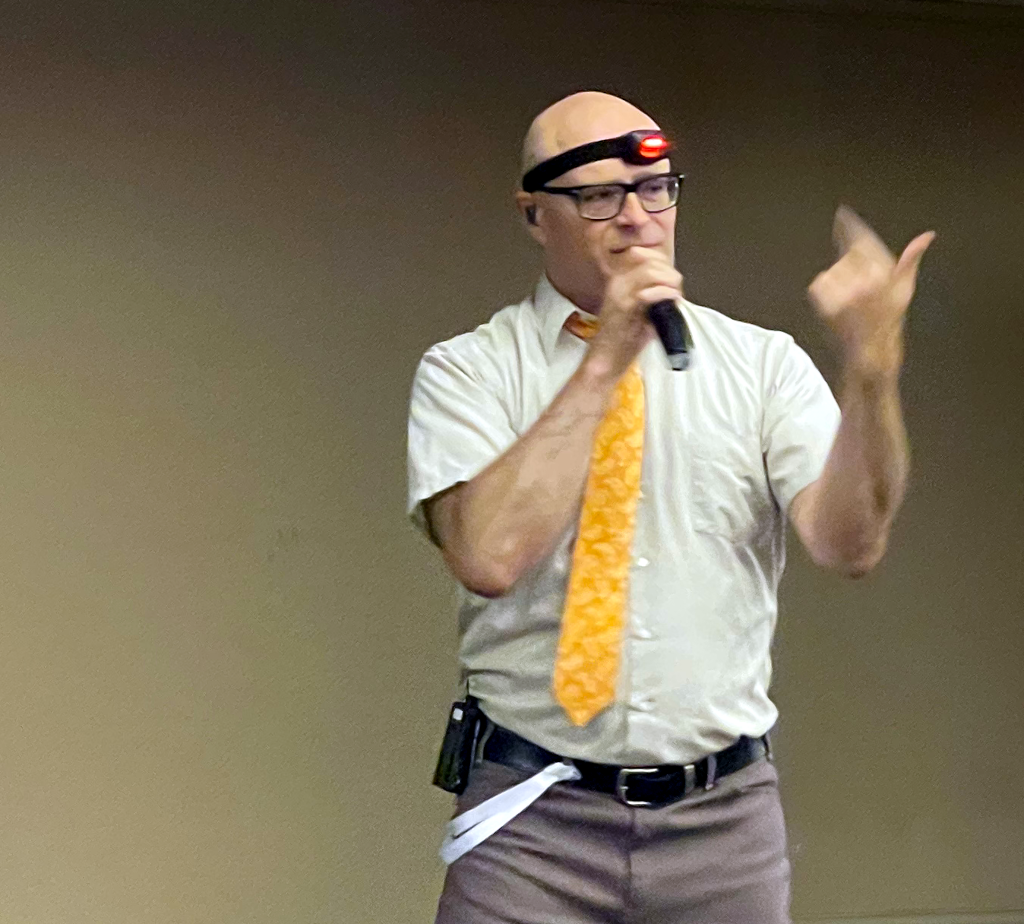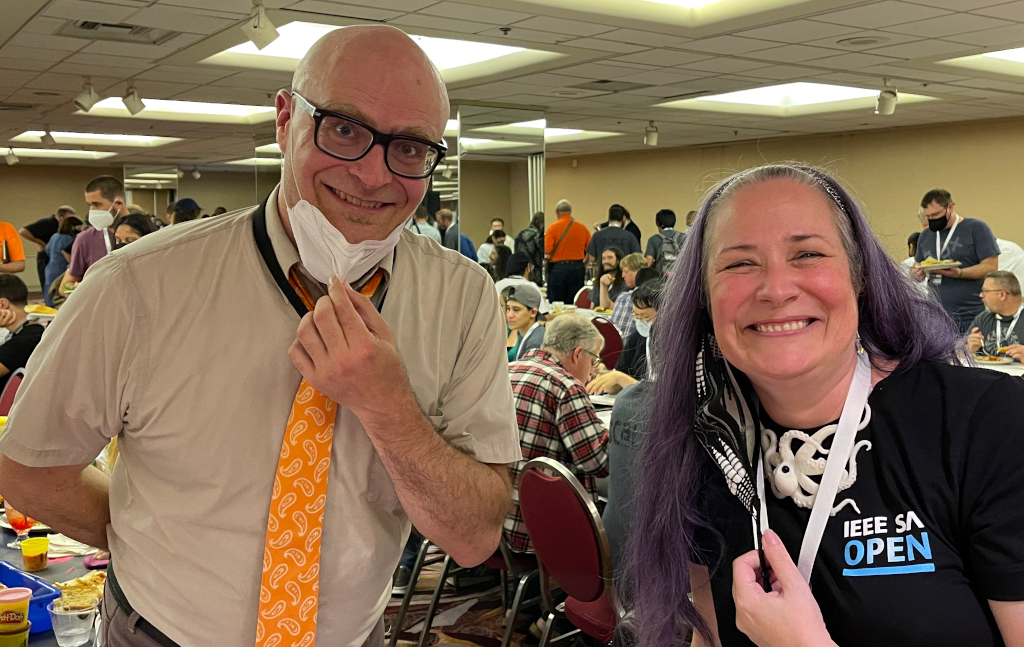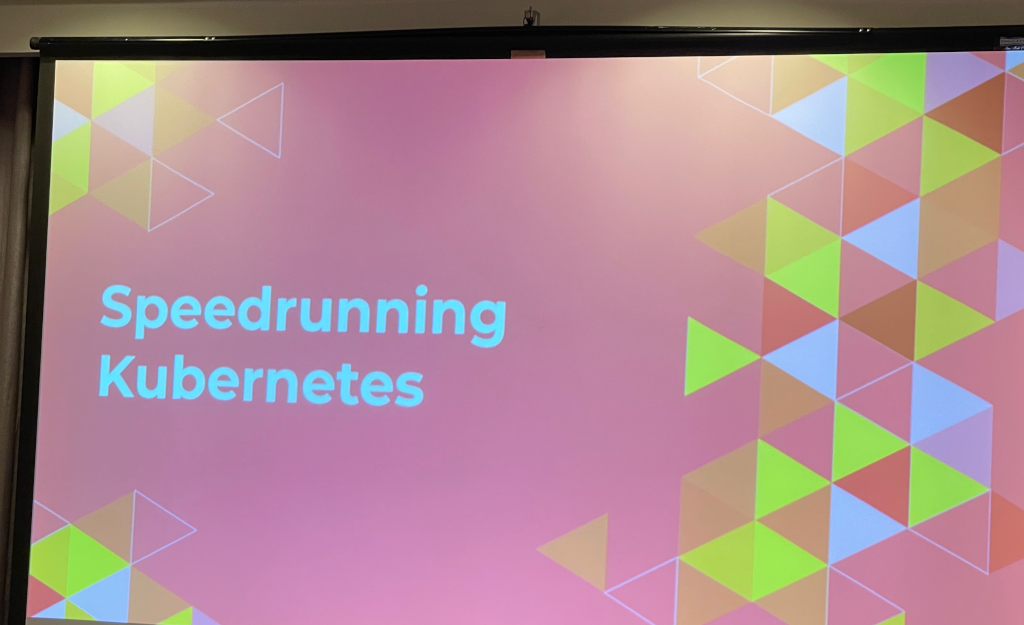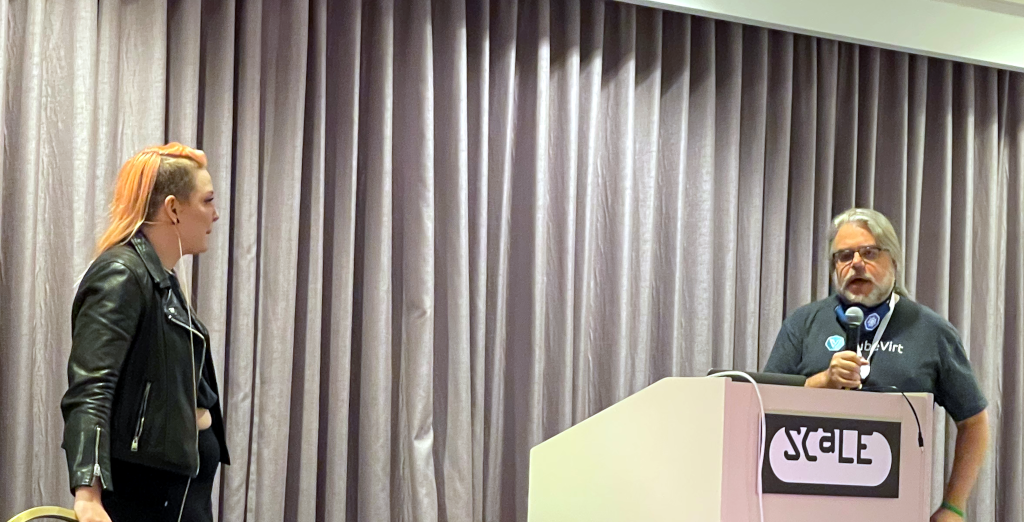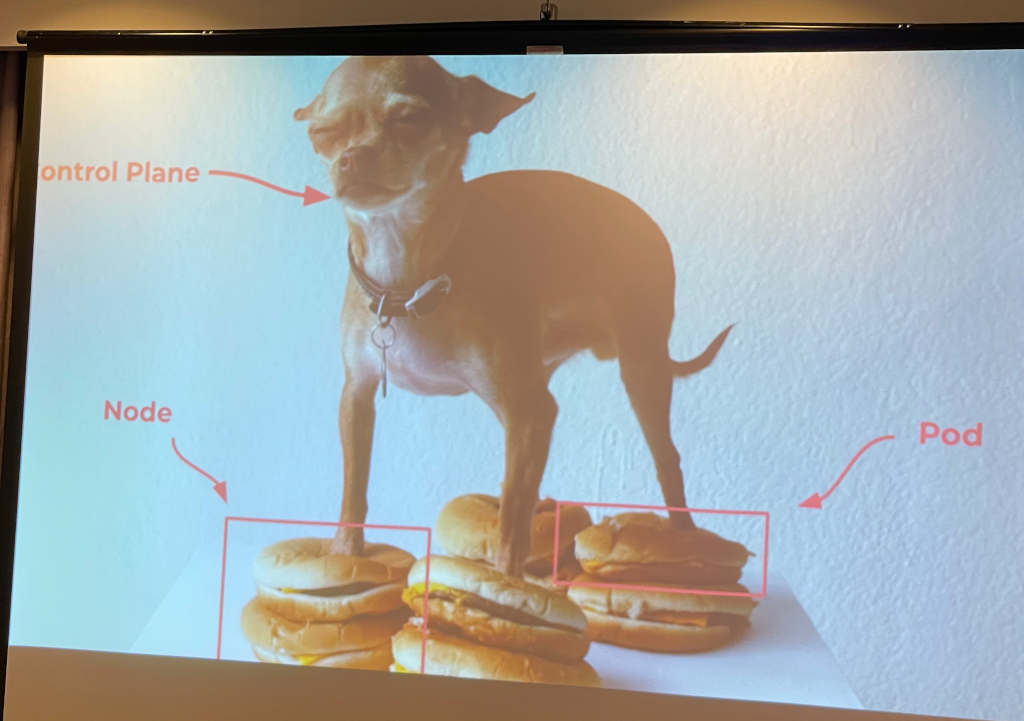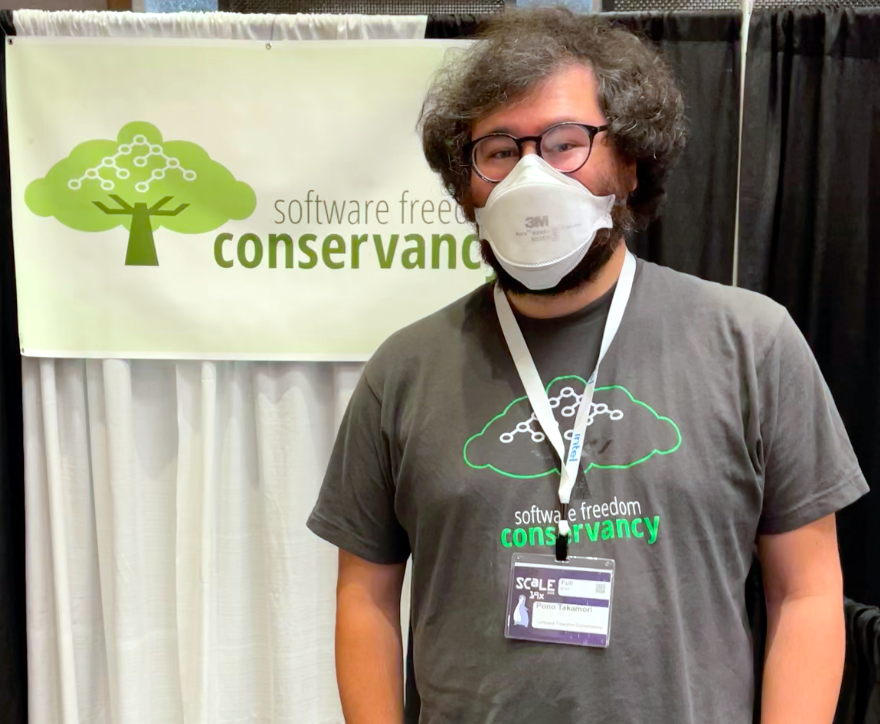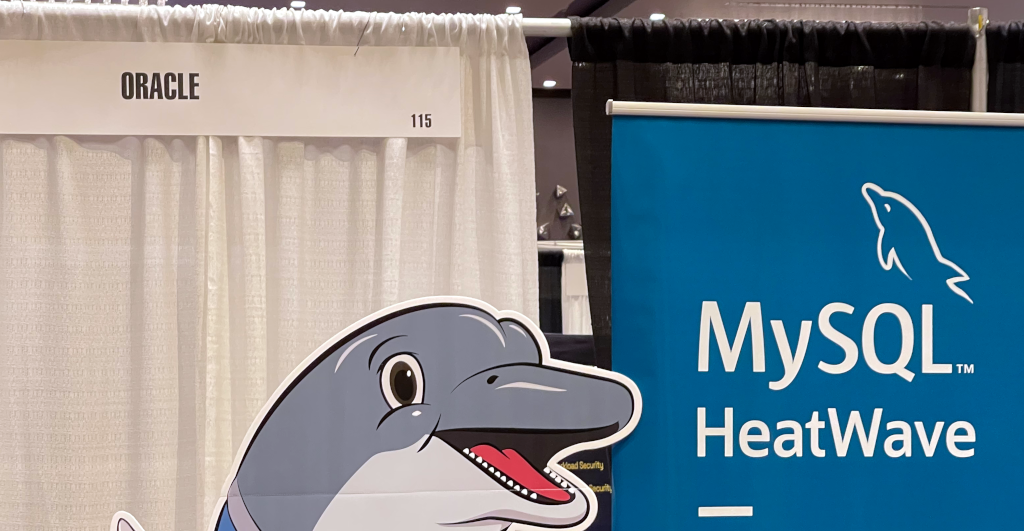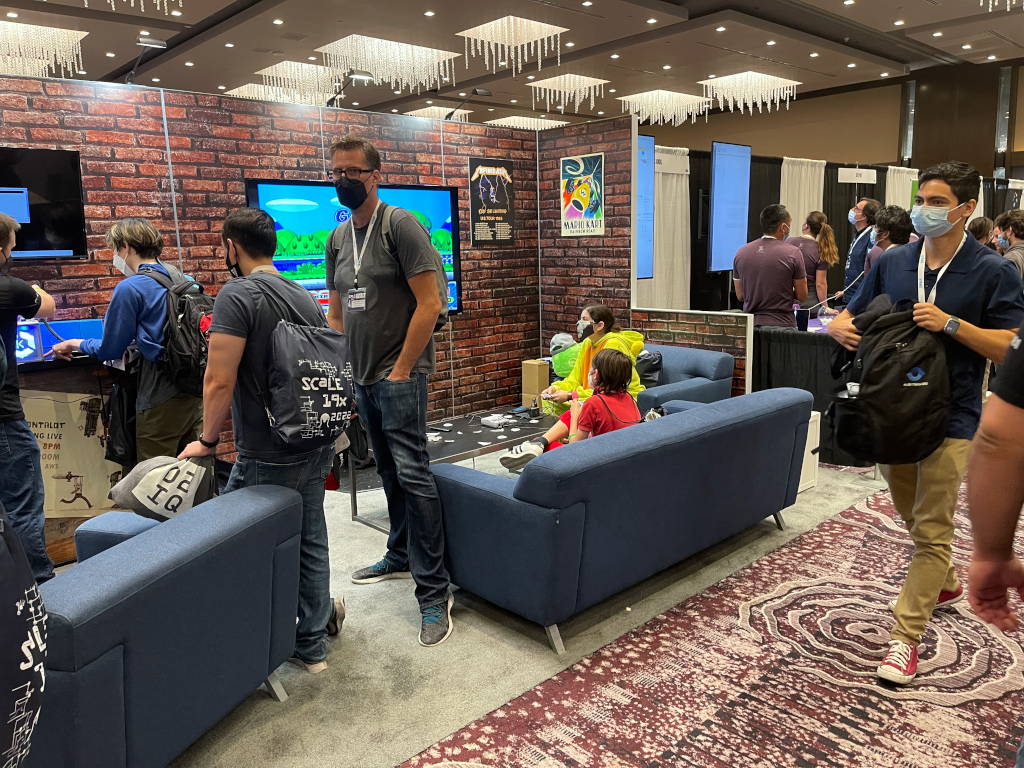I am back at the Southern California Linux Expo (SCaLE) for the first time in many years, and I was surprised at how happy this makes me. It is always a well run conference and it tends to bring a lot of people I like together in one place, which means I get to meet a lot more people to like as well.
The main SCaLE sessions occur over the weekend, but there are a lot of cool things that happen in the days before. For Thursday, AWS sponsored Cloud Native Builder Day to showcase some of the amazing open source technologies one can use to solve a number of challenges, and I was eager to learn about them.
But before that I needed to get registered. The first step was to show proof of vaccination. While I am thankful that we can have these events, COVID is still a thing and the organizers are doing all they can to mitigate the risk to the conference attendees. Since I’m an old I’ve had two shots and two boosters but the darn thing keeps mutating.
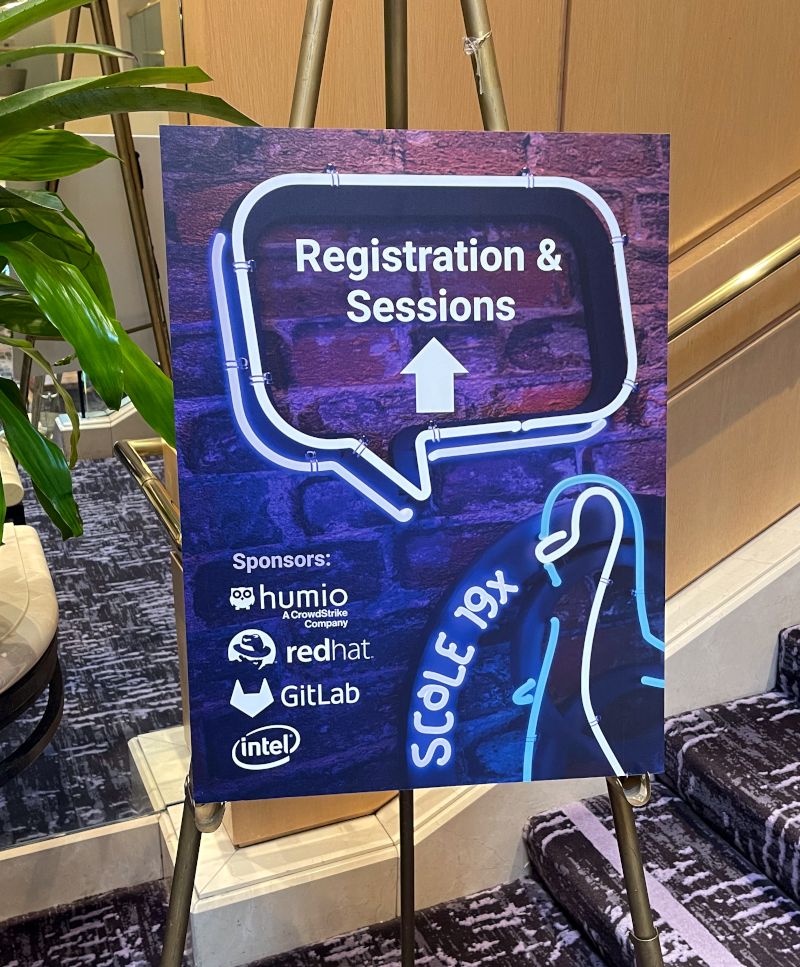
Once past that I headed upstairs where I could use the self check-in kiosks. It was pretty simple to sign in and get my badge printed, and then it was just a short trip down the hall to pick up the conference “swag bag” which included the badge holder and lanyard.
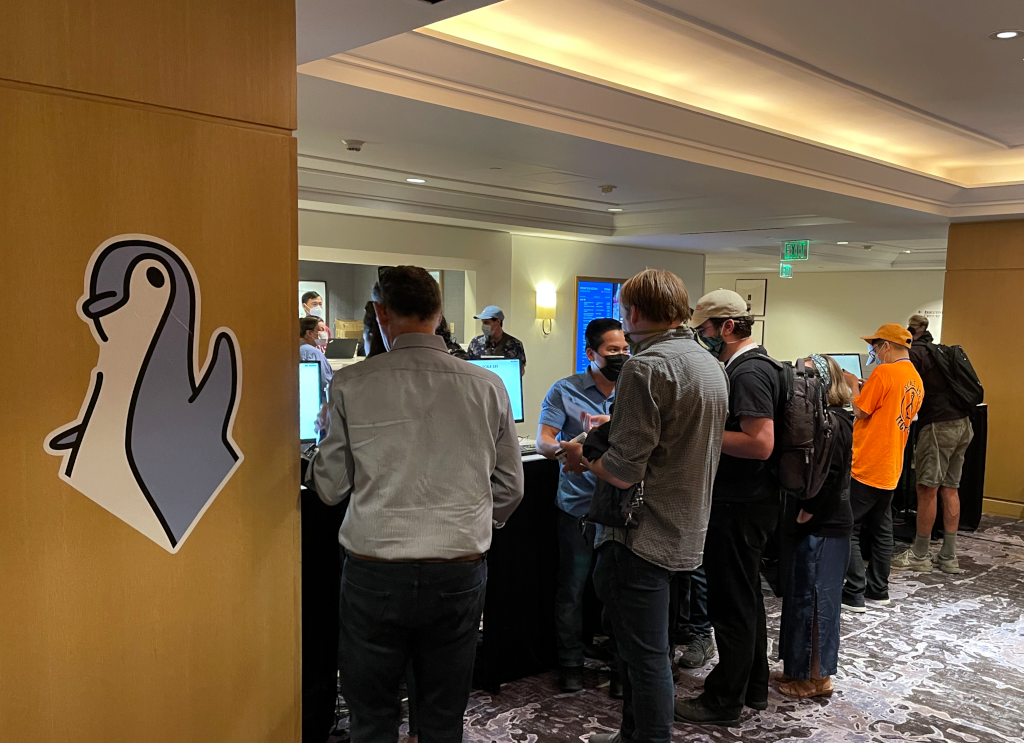
The only change I would make to the process is that once you printed your badge, you should really hit the “close window” button on the screen, as there is a “back” button that could allow the next person who registers to see your name and e-mail. No biggie, but the security nerd in me always thinks about these things.
The conference spans two floors. The Exhibit Hall with the sponsor booths is on the ground floor behind registration (it is technically in the Plaza Ballroom so I just followed the signs for “ballrooms”) while the sessions are on the second floor along with registration. AWS is going to have a pretty cool booth this year.
As an AWS employee I guess I should say that we always have a cool booth (grin) but I especially like the idea behind this one, despite the fact that we were unable to get a mounted deer head (seriously). It’s booth numbers 300, 302 and 304 if you want to swing by, and for those of you who couldn’t make it I’ll be sure to post about it later.
Cloud Native Builder Day showcased three different open source projects, the first one being Triggermesh. This was presented by Jeff Naef who I immediately liked as he was the first to notice that my mask is made by K&N, a company known for their high-end automotive airflow products. He loves performance automobiles as well as open source (he was wearing a Snap-On tools hat) so I knew we would get along.
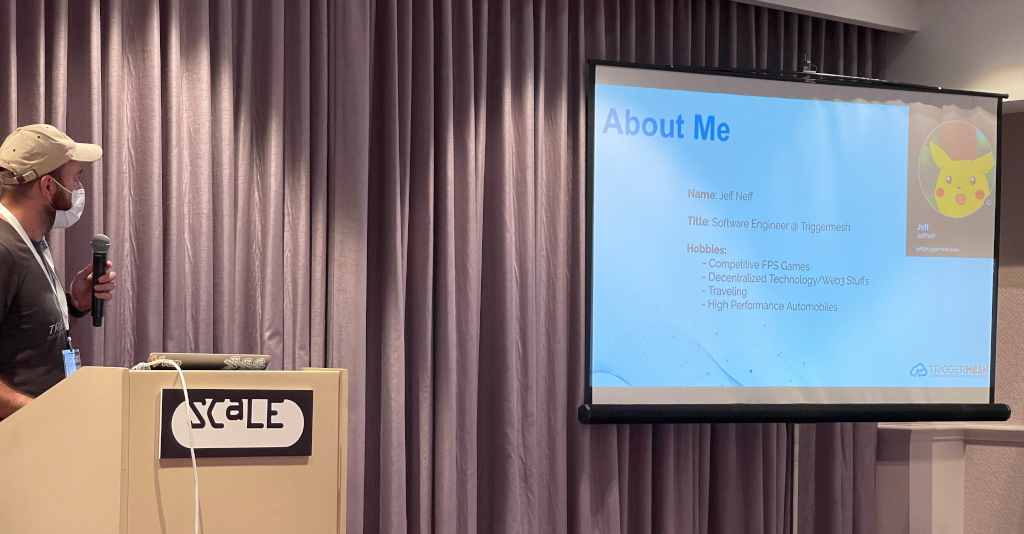
In dealing with cloud native technologies, a lot of the workflow is event driven. Triggermesh lets you seamlessly link together sources and targets for events, normalizing and enriching them along the way. While it does support the ability to create functions using code (in a variety of languages) a lot of the implementation can be done just through configuration.
In one example the data was encoded in base64, and a person asked if Triggermesh could render that in clear text. Jeff was like, sure, and he bravely set out to implement that as we watched. He got really close, but in any case deserves kudos for the attempt, especially considering he was holding a microphone with one hand the entire time.
The next speaker was Zoe Steinkamp from InfluxDB. I first met Zoe at the Open Source Summit in Austin and she is one of my favorite new acquaintances I’ve met through my job at AWS.
Now full disclosure: I missed the first half of her presentation.
SCaLE has done something delightful with the schedule, which is allowing 30 minutes between talks. I’ve talked about this before but this lets speakers switch out without the usual urgency, allows more time for attendees to interact with the speaker after the talk, and improves the hallway track.
I thought I had enough time to grab lunch, which was In-N-Out that Spot had brought for me. We don’t have In-N-Out in North Carolina so I rarely pass up a chance to get it, and I figured I could be back in time. I was wrong. But I did slip into the back of the room which is why this picture isn’t as close as the others.
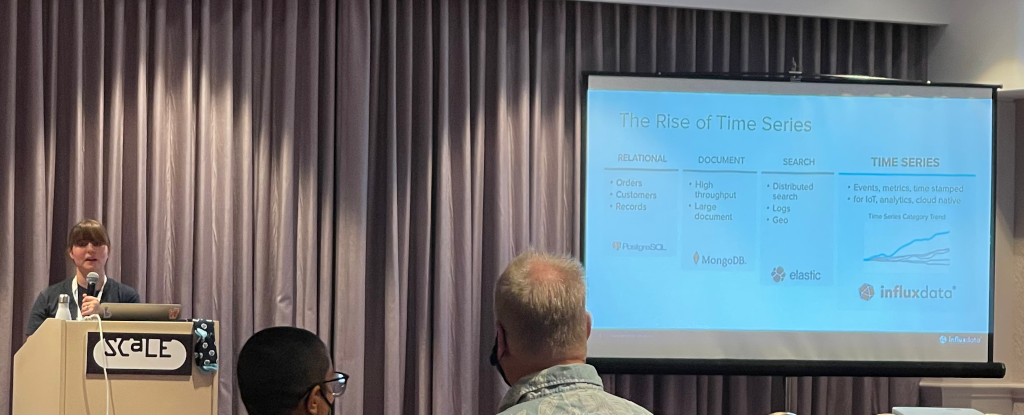
I used to work on an open source project that relied heavily on time series data, so I’m a bit of a time series data geek. Every time I see a presentation on InfluxDB I learn more things to like about it. This time I found out that it is possible to get started with it without being a programmer. A lot of people in the data science field aren’t coders, but they can send their data to InfluxDB pretty easily. The folks at Influx have created InfluxDB University as a free resource to get the most out of their solution, and while I haven’t gone through it yet it looks really comprehensive.
The final presenter was Matt Overstreet from Datastax. Datastax focuses on providing solutions around the Apache Cassandra project, which is a distributed “NoSQL” database.
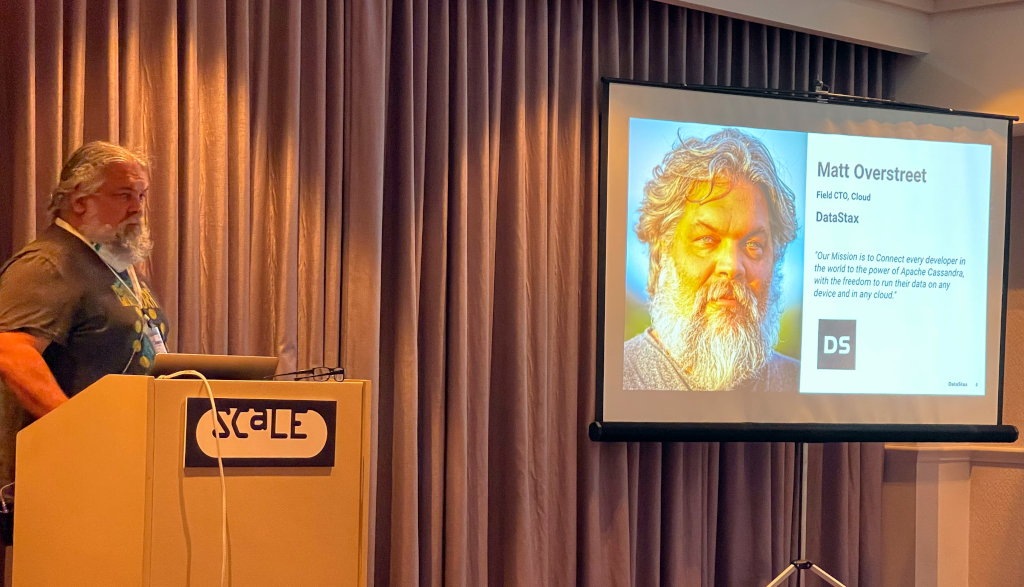
When most people hear the word “database” they think of relational databases. This is a data structure usually based on “rows” of data made up of “fields” and indexed by a primary key. One then uses something like the Structured Query Language (SQL) to retrieve values from those fields. This is all well and good but it tends to be extremely monolithic, which doesn’t work well in today’s distributed cloud environment.
Think about it. In a datacenter you might have sub-millisecond latency, so a query can be returned quickly. Move that datacenter across the country, and now it your latency is, say, 100ms. Move that to the other side of the world and, well, you get the picture. Now if you only have a few queries that might be okay, but when you consider thousands and then millions of queries, the response time of your application is going to take a hit.
Cassandra allows you to distribute that data both within a datacenter (for reliability) and also regionally. You can then put your data near your customers, improving their experience.
I was already sold on Cassandra (we used it at OpenNMS) but what I learned from this presentation was the wonderfulness that is “k8ssandra” (kate-sandra). This is Cassandra but running in Kubernetes. If you have ever had to extend and expand a Cassandra cluster, you know that while it isn’t super difficult there are a number of gotchas that can cause problems. What if you could automate it? Matt showed us an example that let him spin up (and tear down) an 800 node cluster in minutes.
Cool, huh?
The first day of SCaLE 19x was a blast, and I am eager to see what the rest of the week brings.
